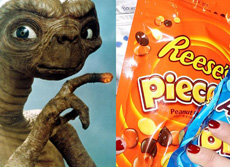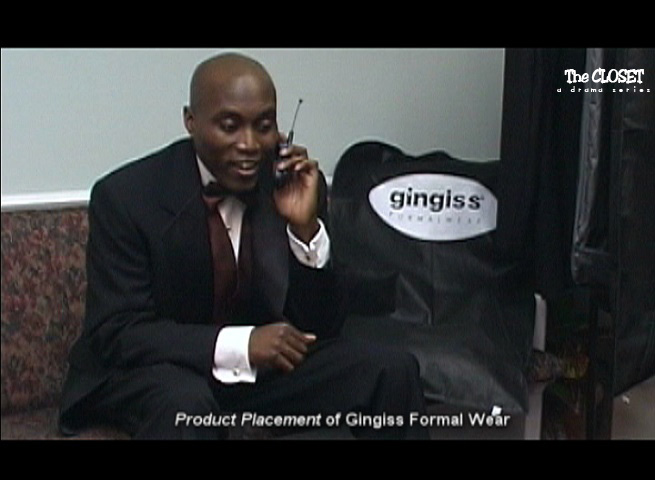COVER STORIES
A "Backdrop" and/or "Product Placement" type of advertising within one of our electrifying projects.
"When viewers see their favorite characters wearing a particular perfume, eating a particular candy bar or driving a specific car, they want to emulate the character they identify with and live vicariously through that character," states Janice McNamara, Product Placement Specialist.
Product placement is a form of advertising in which branded goods and services are featured in a film production that targets a large audience.
What is Product Placement (PP): Product placement is a form of advertising in which branded goods and services are featured in a production that targets a large audience. Also known as "embedded marketing" or "embedded advertising," product placements are typically found in movies, television shows, personal videos, radio, and—less commonly—live performances. In exchange for product placement rights, companies may pay a production company or studio in cash, goods, or services.
How Does Product Placement Work? Product placements are presented in a way that will generate positive feelings towards the advertised brand and are implemented, mentioned, or discussed through the program. They are not explicit advertisements. Product placement is effective because it enables the audience to develop a stronger connection with the brand in a more natural way, rather than being directly marketed to. When a brand appears in a movie, TV show, or other performance, it is most likely because an advertiser paid for that privilege. Some people believe that such advertising is inherently dishonest and deceptive to easily-influenced children.
Advertisers and producers have become more sophisticated in how they execute product placements. For example, a product's appearance may be relatively overt or seamless, such as if the same manufacturer made every car, shoe, or drink featured in a show or movie. Another subtle tactic is to avoid showing a label or logo but featuring a product's distinctive color or packaging, such as a curvy glass Coca-Cola bottle.
Product placement creates explicit and implicit advertising effects. For example, viewers of product placement are more able to name a brand after seeing it used in the content. It can also create and cultivate different attitudes toward brands, as well as spur purchase intention. Brands placed with attractive characters or settings tend to appeal to people more. That was the case in The CLOSET drama web-series (image on left).
Examples of Product Placement: I, Robot with Will Smith, Converse product placement was prominently display in several scenes of the storyline for the main character, Detective Del Spooner. (video on left) The James Bond movie franchise provides many examples of product placement. While some advertisers change over the years, the constant is a robust lineup of product placements. For instance, in the franchise's reboot Casino Royale, automaker Ford paid $14 million to feature James Bond driving one of their models in about three minutes of screen time minutes. Sweet Blessings Bakery was mentioned by name and prominently displayed in The CLOSET drama web-series (video on left).
 Many Gen Xers can tell you that the candy most associated with E.T. the Extra-Terrestrial is Reese's Pieces, or recall the scene in Wayne's World that pokes fun at product placements while promoting at least five separate brands.
Many Gen Xers can tell you that the candy most associated with E.T. the Extra-Terrestrial is Reese's Pieces, or recall the scene in Wayne's World that pokes fun at product placements while promoting at least five separate brands.
Product Placement Trends...
With the proliferation of ad blindness and banner blindness (the ability to ignore ads) and the spread of streaming, a gap has formed in the efficacy of traditional televised advertising. Filling that gap is a more sophisticated use of product placements. A recent trend is to sell advertisers the entire storyline.
Digital editing technology has been utilized to introduce or change product placements in post-production, sometimes going back to change items used in syndicated shows long after they were filmed. When advertisers object to their brands being featured in productions, producers may engage in "product displacement," where they remove logos digitally. Another option, known as "greeking," sees recognizable labels changed or taped over.

About SNFilms
At SENWOT NETWORK FILMS our goal is to continue to penetrate the motion picture industry just as Alfred Hitchcock, James Cameron, George Lucas and Spike Lee did -- by creating motion pictures and television shows that focus on ordinary people being drawn into an extraordinary and unique chain of events -- enabling, you the audience to reap the benefits of being uniquely entertained.
Get in Touch
SENWOT NETWORK FILMS
4002 Highway 78
Suite 530-195
Snellville, Georgia 30039
Call/text: (678) 653-FILM (3456)
Email: contactus@snfilms.net
